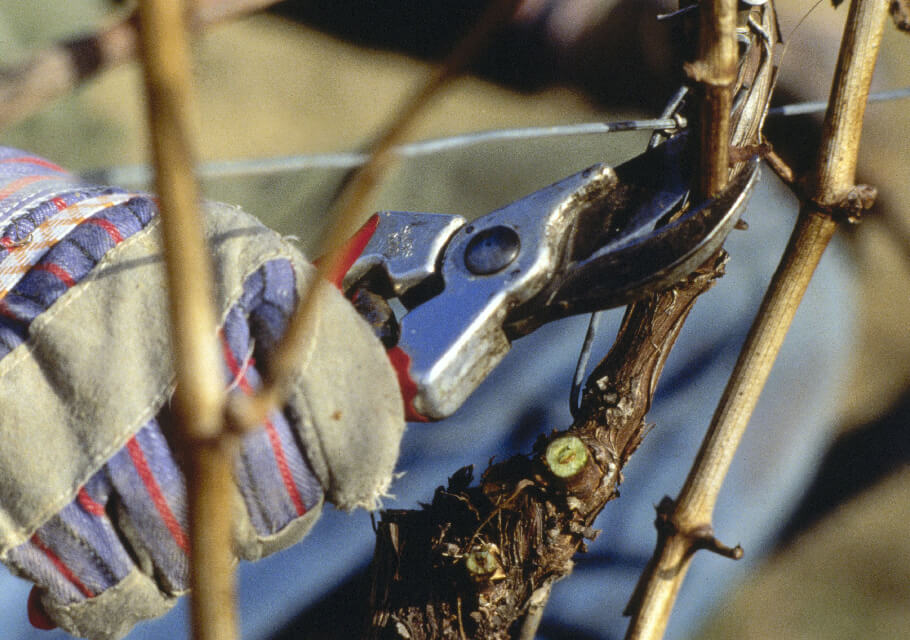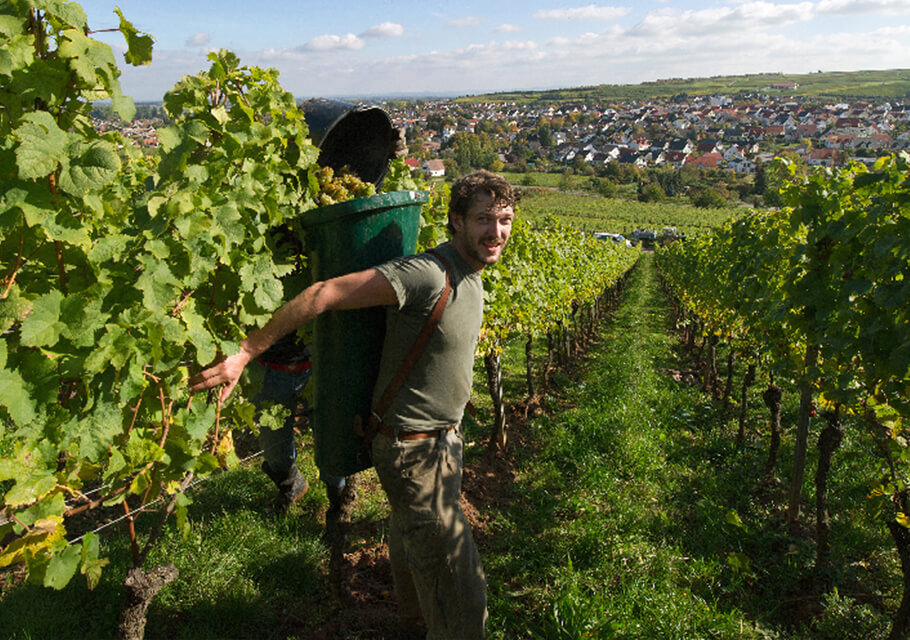Climate
Climatic factors such as sunshine duration, precipitation, and temperature play a key role in all biological and biochemical processes of a vine. They influence the buildup and depletion of the substances in a berry during ripening and thus, the quality of the grapes and resultant wines. As one of the most northerly viticultural areas of the world, Germany numbers among the “cool climate” wine-growing countries. It is primarily the warm Gulf Stream and its tempering influence on Western Europe’s climate that enables grapes to ripen this far north. Nevertheless, the climate and weather in Germany’s wine regions pose ecological challenges unknown to Mediterranean vintners. The fundamental differences are as follows:
- During vegetation, there is much less sunshine in Germany than in more southerly wine-growing regions.
- The bulk of precipitation in Germany occurs in the summer. Rainfall generally declines during the final stage of ripening – in southern Europe, rainfall is scarce in the summer and increases dramatically as the harvest approaches.
- The periods beyond the danger of frost are shorter and the average monthly temperatures are lower.
These climatic factors enable grapes to ripen slowly and benefit from nutrients in the soil. This fosters the development of fruity, well-structured acidity that enhances the longevity of white wines, in particular.
Soil
As a reservoir for water, nutrients, and warmth, soil more or less shapes the character and taste of a wine depending on grape variety. Grapes are cultivated in a wide variety of soil types in Germany. The substrata of vineyards are extremely varied, both in terms of soil types and structure. It is these geological – as well as climatic – factors that are responsible for the differences among the various vineyard sites. Not every soil type is suitable for every grape variety. Thanks to this great diversity of soil types, there is no homogenized style of German wine, but rather, a wide range of quite distinctive wines.
Terrain
The most favorable conditions for viticulture in Germany are the south- or southwest-facing slopes of protected valleys, like along the Rhine and its tributaries as well as the valleys of the Elbe, Saale and Unstrut rivers. The exposure to sunlight is more intense on slopes than in flat sites and slopes with a southern exposure also profit from longer periods of sunshine.
Work in the Vineyard
Human factors also play a large role in lending a wine its unmistakable identity – Not only environmental conditions but also vineyard and cellar practices, knowledge handed down from generation to generation, and the cultural heritage of the grower. Innovations in vineyard and cellar techniques during the past few decades have been vital to viticulture in Germany’s wine-growing regions, and extensive scientific research has contributed to definite improvements in wine quality. It can be said that the amount of really excellent German wine produced today is unprecedented. Throughout the entire year, a winegrower has various tasks to tend to, such as training and pruning the vines, soil care, foliage treatment and thinning, as well as harvesting the grapes as selectively as possible.

Winter
Pruning Season
In January or February, the old wood is pruned away, a procedure that definitely influences the potential yield and ultimately, the quality of the wine. The number and length of canes and their shoots also play an important role. Quality-conscious growers generally reduce the number of canes per vine to two short ones or one long one. Many growers have come to realize that today, with a worldwide surplus of wine, quality is a vital competitive factor – and quality begins in the vineyard. Vine prunings are usually mechanically chopped or crushed, then worked back into the soil to improve the humus supply. To this day, pruning by hand remains the norm, a very labor-intensive task. It takes large estates several weeks to complete this work.

Spring
Vineyard Management
Vineyard activities peak in the springtime, from March to April. Before bud-burst, the vine’s shape takes form through bending and tying the canes in order to ensure an adequate nutrient supply to the shoots. Following this step, soil cultivation begins in order to optimize growing conditions for the vine. Plowing and seeding for green covering, as well as the natural growth of plants in the vineyard, bring the soil to life and support the natural, biological activity of the soil. Organic nutrients and supplementary minerals are also added at this time.
“As little as possible, as much as necessary” is the motto of modern winegrowers with regard to spraying to combat vine pests and fungus disease. Starting with healthy vines helps reduce the incidence of disease and damage. To help keep the grapes healthy, growers spray them from four to seven times between May and August, depending on the weather.

Summer
Berry Formation & Pruning for Quality
In mid-June the vines blossom and self-pollinate, the phase that leads to berry formation. Growers remove unwanted shoots to promote growth and prune clusters in order to reduce yield and thus, improve quality of the grapes. Between June and August, a thick leaf wall develops that is kept in shape by tying or binding the shoots. Leaves are very important, but some must be removed in order to increase sun penetration, manage the height of the vine, and improve air circulation. In July and early August, thinning out some of the pea-sized berries strengthens those left on the bunch. Starting in mid-August, the grapes clearly begin to ripen. The amount of sugar in the berries rapidly increases as the acidity decreases (particularly the malic acid; the tartaric acid is retained).

Fall
Harvest
Depending on the summer weather, the harvest begins in mid- or late September. Growers can measure how ripe the grapes are with the help of an optical instrument, a refractometer, to determine the optimal time to begin picking. The amount of sugar that has developed in the grapes’ juice, or must, is an important indication of ripeness. Grape variety, vineyard site as well as ripeness all play a role as to when the harvest begins, but the individual growers decide for themselves.
Work in the Cellar
Much of the practices that occur in the cellar – crushing and pressing, must treatment, fermentation, aging, and bottling – are identical in Germany as elsewhere. In order to be bottled with certain quality classification, vintners will follow guidelines of German wine law. For instance, use of chaptalization is strictly forbidden for Prädikat wines. Learn more about Germany’s classification systems and labeling laws.
